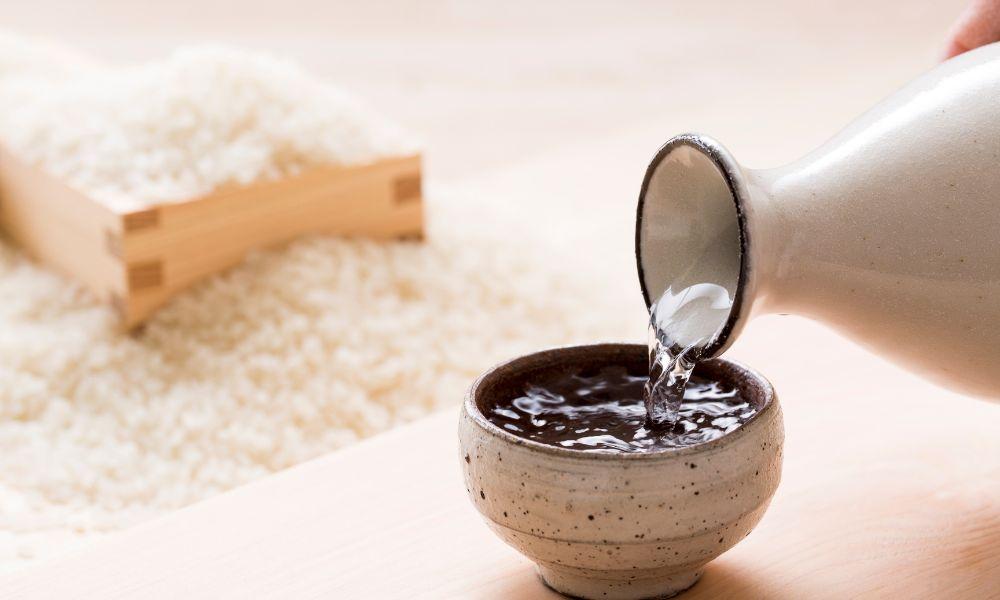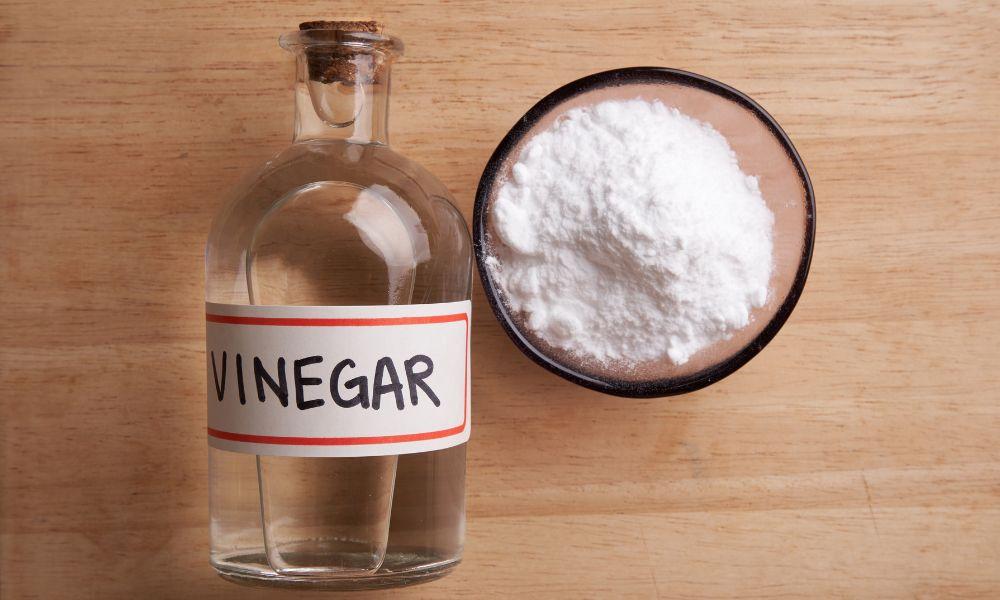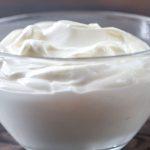Embark on a culinary journey as we traverse through the realm of mirin alternatives. This essential Japanese ingredient lends an exquisite, sweet flavor to sushi, teriyaki, and more. But, what to do if mirin isn’t on your shelf?
Explore our easy-to-find substitutes, which maintain the authentic taste and add a twist of New York culinary flair to your cooking footprint. Let’s dive into this flavorful adventure!
Navigating the Aisles of Japanese Cuisine – An Ode to Mirin

On this flavorful journey, one hero from the far east plays a significant role – the humble Japanese rice wine known as mirin. The essence of mirin is indispensable within Japanese cuisine. Its blend of sweetness and mirin flavor profile enhances a plethora of dishes, improving the flavors by leaps and bounds. But what happens when you run out of it? Or, a guest at your home counters allergies with mirin?
Top Mirin Alternatives for a New-Yorker’s Palate
| Mirin Alternative | Description | Culinary Use Case |
|---|---|---|
| 🍶Sake | A Japanese rice wine with a complex flavor profile. Its wine-like fruity aroma and hint of umami make it a close match for mirin. | Substitute sake at a ratio of 4:1 sake to sugar for vegetable tempura or other dishes |
| 🍾Dry Sherry | A Spanish fortified wine with a rich, nutty flavor. Its higher alcohol content adds depth to the dish. | Use dry sherry as a 1:1 substitute for mirin in dishes like miso-glazed cod, adding more sugar if necessary to balance the acidity. |
| 🍯Honey | A rich sweetener with a wide flavor variety based on its type. It’s a good non-alcoholic mirin option. | Ideal for teriyaki sauce, particularly for non-alcoholic or kid-friendly dishes. Vegan options could include agave or maple syrup. |
| 🍇White Grape Juice | A natural, non-alcoholic sweet and slightly tart alternative, convenient for soups and marinades. | Substitute in dishes like Yakitori for a less sweetened outcome. Balance it with a dash of soy sauce or miso for the umami touch. |
| 👩🍳Vinegar and Sugar | A DIY blend that closely mimics mirin’s sweet and sour character. | Use when other alternatives aren’t available. Substitute at a ratio of 3:1 of vinegar to sugar in holiday cooking, adjusting as needed. |
| 🍎Rice Vinegar or Apple Cider Vinegar | Perfect for those seeking lower sodium versions. | Retain sweetness while reducing salt content. |
| 🍁Agave Syrup or Maple Syrup | Great for vegan dishes or those avoiding honey due to allergies. | Substitute in vegan teriyaki sauces or other recipes that call for honey. |
1. Sake – A Direct Alternative

If you’ve dined in Japanese restaurants around New York, chances are you’ve encountered sake. Known to some as the cousin of mirin, it’s the first point of call for anyone seeking a close mirin alternative. Sake’s underlying mirin flavor profile with hints of sweetness and umami makes it a capable stand-in.
I recall one unforgettable incident at Boat Basin Cafe where we ran out of mirin in the middle of a bustling dinner service. With an order for vegetable tempura waiting to be filled, our head chef made a quick dash to the liquor station and returned to the kitchen with a bottle of sake. The result? A surprisingly flavorful tempura that sold as a special for the rest of the week!
Sake is typically made from fermented rice and is a fundamental part of Japanese cuisine, similar to mirin. Its flavor profile is complex due to multiple fermentations, with subtle sweetness from the rice, a wine-like fruity aroma, and a hint of umami. While it doesn’t have the depth of sweetness of mirin, you can add sugar to balance this. When cooking with sake as a mirin substitute, consider a ratio of 4:1 of sake to sugar.
2. Dry Sherry -The Western Stand-in
In New Yorkers’ pursuit of the perfect mirin alternative with an available-at-hand option, dry sherry often comes to the rescue. If, like me, you’ve ever experimented with dishes improved with mirin and had to concoct a last-minute substitution, you’d know that dry sherry is a game-changer.
Boat Basin Cafe taught me the importance of flexibility in cooking. There were days when the need for a last-minute swap meant getting creative with whatever was available in the kitchen. One day, the supply truck forgot our order of mirin. Departing from the oriental, a splash of dry sherry perched on our bar rescued us that day! It proved to be a fantastic mirin alternative, adding a sophisticated depth of flavor to our miso-glazed cod.
Dry sherry originates from Spain and is a fortified wine, which means it has a higher alcohol content than regular wine (usually around 15-20%). It imparts a deep, rich, nutty flavor with a dry finish that can work wonders in Japanese cooking and other cuisines. Use an equal amount as a 1:1 substitute for mirin, but because sherry can be a bit more acidic, you may want to add an extra pinch of sugar for balance.
3. Honey – A Sweet Surprise
Breaking the mirin vs. other alcohol substitutes riddle, honey sneaks into our list as a non-alcoholic mirin alternative. Do not underestimate its power to enhance the depth and character of your dishes. Ideal for a dry January or if you are cooking for kids, honey is the best non-alcoholic mirin replacement if you ask me.
One exquisite memory to share from the Boat Basin Cafe days, beyond the need for non-alcoholic mirin substitutes in teriyaki sauce, traces back to a fun vegetarian night. Tasked to create a unique main course that evoked ‘Japanese flavors in a New York kitchen’, I decided to tweak my signature teriyaki tofu. I swapped mirin for whipped honey, creating a refined, slightly floral teriyaki sauce that followed made it to our menu permanently.
Honey may not have the alcoholic or acidic nature of mirin, but it has a unique rich sweetness and depth that can work well in some mirin-required dishes. Its quality varies based on the type of honey, so select according to your preference. Generally, buckwheat honey could be a remarkable fit due to its robust, molasses-like flavors. For vegan options, agave syrup or maple syrup can function effectively.
4. White Grape Juice – A natural mirin alternative
White grape juice, with its natural sweetness and slight tartness, serves as a great natural mirin alternative for those looking for a non-alcoholic and convenient substitute. This mirin match-up is ideal for marinades, soups, and mature palates that prefer less sweetened outcomes.
At the Boat Basin Cafe, we once served a group of parents with their little ones. The challenge was to prepare a Japanese inspired dish that catered to adults and youngsters alike. So, we got into a huddle and decided to play around with the dish’s sugar levels without losing the essence of mirin. Enter white grape juice. The result was a mildly sweet Yakitori that even the kids loved!
White grape juice is an excellent non-alcoholic, natural substitute for mirin, with a balanced sweet and tart profile. It’s a perfect choice for those who can’t tolerate alcohol and good with children’s meals. Still, it doesn’t have the complex umami flavor of mirin, so you might want to combine it with a dash of soy sauce or miso for that umami touch.
5. Vinegar and Sugar – A DIY replacement

Running out of all above-mentioned alternatives? Don’t fret. A DIY blend of vinegar and sugar can mimic mirin’s flavor profile closely and make a great mirin alternative. The tang from the vinegar coupled with the sweetness of sugar creates a beautiful symphony that can uplift various dishes.
During the holiday rush at Boat Basin Cafe one year, we had a moment of panic when we realized our mirin supplies had depleted completely. This crisis led us to our kitchen cupboards where we could make our “mirin from scratch“. A DIY blend of rice vinegar and sugar came to the rescue and saved our special holiday menu!
This DIY combo can be a life-saver when you don’t have other substitutes on hand. The zingy tang of vinegar balances the sweetness of sugar, resembling mirin’s sweet-sour character. For an even closer resemblance, use rice vinegar, which originates from the same primary ingredient as mirin – rice. The ratio is generally 3:1 of vinegar to sugar, but feel free to adjust according to your taste preference and the acidity of your vinegar.
Explore the World of Lower Sodium Mirin Alternatives
Living in New York can mean exploring healthier living and eating decisions. If you are one of those experimenting with lower sodium in your food, then low-sodium mirin substitutes like rice vinegar or apple cider vinegar can be your go-to options. They retain the sweetness whilst reducing the salt content.
Navigating Allergies and Mirin in Vegan Cooking
Let’s face it. Allergies are a reality for some of us, and finding a good mirin alternative that matches your diet restrictions be it vegan, gluten-free or soy-free, can be tough. But worry not – there’s always mirin allergy and substitutes that you can opt for. Considering honey for sweetening your sauce next time? Stick to agave syrup or maple syrup if you are strictly vegan.
At the Boat Basin Cafe, we catered to all gastronomic preferences. One warm memory was a quiet Sunday lunch service where a regular customer who enjoyed our Miso mahi-mahi requested a vegan alternative of the same dish. We whipped up a special marinade with mirin in vegan cooking substituted by agave syrup and were glad to see them enjoy the dish!
Wrap up
Embark on an exciting culinary adventure within your own kitchen, experimenting with these mirin alternatives. Encounter that perfect balance of authentic Japanese flavors meeting New York’s dynamic palate by letting the spirit of exploration guide you. As someone who navigated the Boat Basin Cafe’s kitchen, embracing these alternatives has brought a world of flavors right to our plates, shaping our gastronomic map, not guided by the boundaries of ingredients, but rather their infinite possibilities.






